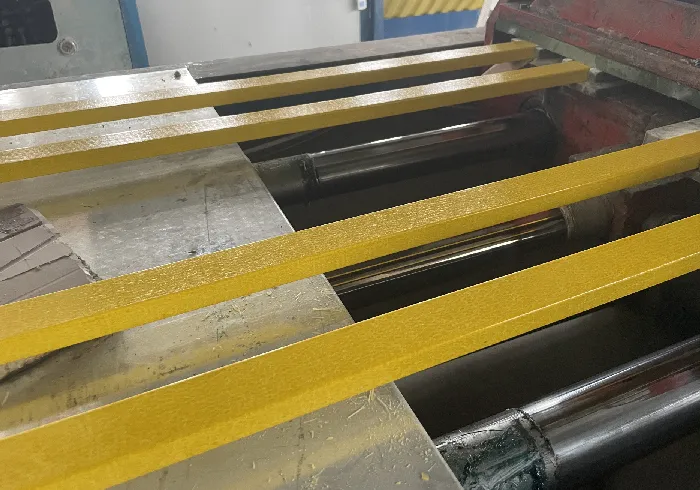loading...
- No. 9, Xingyuan South Street, Dongwaihuan Road, Zaoqiang County, Hengshui, Hebei, China
- admin@zjcomposites.com
- +86 15097380338
- Welcome to visit our website!
Exploring the Benefits and Applications of FRP Pultruded Sections in Modern Construction and Design
The Advantages of FRP Pultruded Sections in Modern Engineering
Fiber Reinforced Polymer (FRP) pultruded sections have emerged as a game-changing material in contemporary engineering and construction industries. These sections are created using a pultrusion process, which involves the continuous pulling of fibers through a resin bath and then through a heated die to form a solid profile. This manufacturing method yields lightweight, yet exceptionally strong, materials that offer numerous advantages over traditional materials like steel and concrete.
Lightweight and High Strength
One of the primary benefits of FRP pultruded sections is their impressive strength-to-weight ratio. Compared to traditional materials, FRP sections are significantly lighter while maintaining comparable, if not superior, strength characteristics. This property not only eases transportation and handling during installation but also reduces the overall structural load. Consequently, this can lead to cost savings in foundational design and construction, as less material is often required to support the same loads.
Corrosion Resistance
Another standout feature of FRP materials is their inherent resistance to corrosion. Unlike steel, which can degrade over time due to exposure to environmental elements, especially moisture and chemicals, FRP pultruded sections remain unaffected by such conditions. This quality makes them particularly suitable for applications in harsh environments, such as chemical plants, marine settings, and wastewater treatment facilities. By reducing maintenance costs and extending service life, FRP materials provide a compelling economic advantage in the long run.
Design Flexibility
frp pultruded sections

The versatility of FRP pultruded sections extends to design applications as well. They can be manufactured in various shapes and sizes, accommodating a wide range of architectural and structural requirements. Additionally, the ability to customize the resin and fiber types allows engineers to tailor the properties of the FRP sections to specific performance needs. This flexibility is particularly beneficial in innovative construction projects that demand unique sections to achieve aesthetic and functional goals.
Thermal and Electrical Insulation
FRP materials also offer beneficial thermal and electrical insulation properties. Unlike metals, which conduct heat and electricity, FRP sections can serve as excellent insulators, thereby enhancing safety in various applications. This characteristic is especially important in electrical installations and environments where thermal conductivity can lead to energy inefficiencies or safety hazards. Moreover, their non-conductive nature increases their applicability in industries where electrostatic discharge (ESD) can pose a danger.
Sustainability
As sustainability becomes more central to engineering practices, FRP pultruded sections present an eco-friendly alternative to traditional building materials. The production process of FRP generates less waste, and their durability contributes to a longer lifecycle, reducing the need for frequent replacements. Furthermore, many FRP materials can be made from recycled fibers and resins, aligning with green building initiatives and reducing the overall carbon footprint associated with construction projects.
Conclusion
In summary, FRP pultruded sections represent a significant advancement in material science, offering unique advantages that cater to the evolving needs of modern engineering. Their lightweight yet strong properties, resistance to corrosion, design flexibility, insulation capabilities, and sustainability make them an increasingly popular choice for a wide range of applications. As technology continues to evolve and the demand for innovative building materials rises, FRP pultruded sections are poised to play a vital role in shaping the future of construction and infrastructure development.
-
Premium FRP Handrail for All ApplicationsNewsAug.29,2025
-
Low Maintenance FRP Mini Mesh Grating ProductsNewsAug.29,2025
-
Innovative FRP Square Tubes for Modern Industrial SolutionsNewsAug.29,2025
-
FRP Water Storage Tanks Wholesale Solutions for Bulk BuyersNewsAug.29,2025
-
FRP Molded Grating Solutions for Diverse Industrial ApplicationsNewsAug.29,2025
-
Construction Advancements Through FRP Pultruded ProfilesNewsAug.29,2025
-
Why Choose FRP Railings, Guardrails, and Handrail Systems?NewsAug.29,2025
